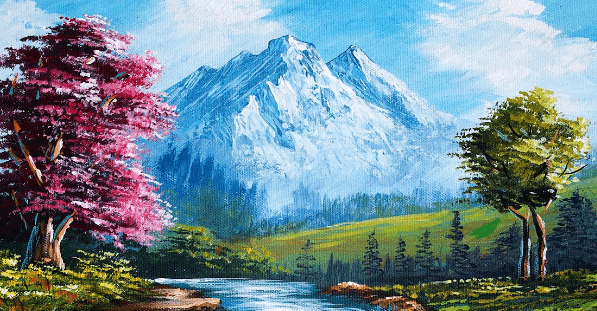Painting:7aknpusu7yc= Landscape

The exploration of landscape painting, particularly as exemplified by Painting:7aknpusu7yc=, reveals a profound dialogue between the artist and the natural world. This work not only pays homage to historical techniques but also invites a contemporary discourse on the evolving perceptions of landscape art. By analyzing the emotional and philosophical layers embedded in such compositions, one can gain insights into the broader implications of humanity’s relationship with nature. What remains to be examined is how these elements coalesce to challenge our understanding of both art and the environment.
History of Landscape Painting
Emerging from ancient traditions and evolving through various cultural movements, the history of landscape painting reflects humanity’s shifting relationship with nature and its representation in art.
This genre holds profound cultural significance, serving as a mirror to societal values and beliefs.
Furthermore, it offers a unique platform for emotional expression, allowing artists to convey their personal experiences and perceptions of the natural world.
See also: Outline:Uctz8h4duu8= Map of the World
Influential Landscape Artists
Throughout history, several landscape artists have profoundly shaped the genre, each contributing unique perspectives and techniques that reflect their cultural and personal contexts.
The impressionist influences of artists like Monet opened new avenues for capturing light and atmosphere, while modern interpretations by contemporary creators challenge traditional boundaries.
These artists evoke emotional responses, inviting viewers to explore the dynamic relationship between nature and human experience.
Techniques in Landscape Art
Landscape art employs a variety of techniques that not only capture the physical attributes of nature but also convey the artist’s emotional and philosophical interpretations of their surroundings.
Mastery of color theory enhances the vibrancy and mood of landscapes, while effective composition techniques guide the viewer’s gaze, creating harmony and balance.
Together, these elements invite viewers to experience the landscape’s essence and emotional depth.
Conclusion
In conclusion, landscape painting serves as a profound medium for exploring the interconnectedness of humanity and nature.
The evolution of this genre reflects shifting perceptions and cultural values through time.
For instance, the hypothetical case of a contemporary artist integrating urban elements into natural landscapes could illustrate the tension between progress and preservation.
Such artistic endeavors not only challenge traditional boundaries but also encourage critical reflections on the impact of human activity on the environment, reinforcing the genre’s enduring relevance.




